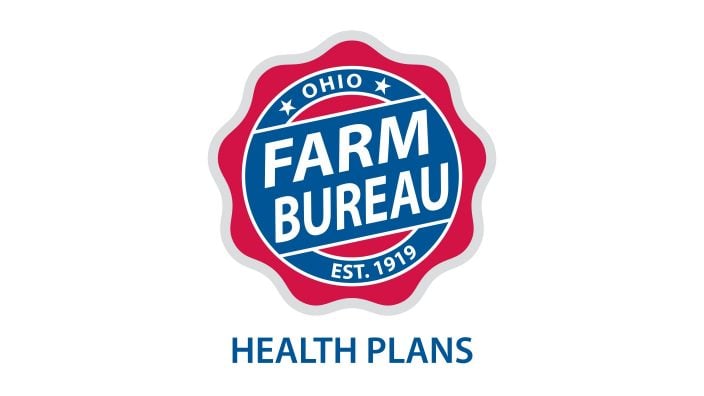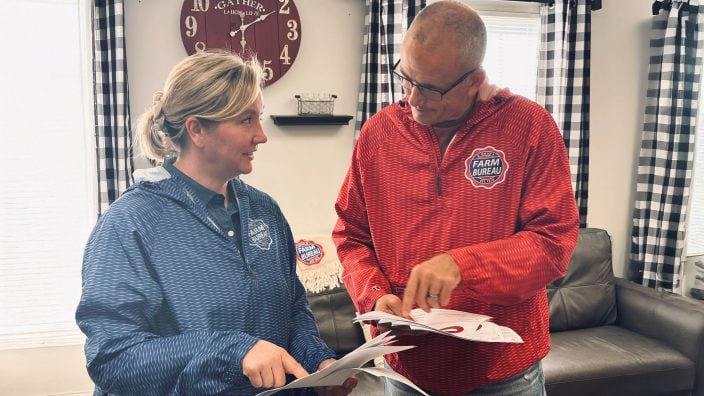Applications for Ohio Farm Bureau Health Plans now available
Members have three ways to apply: contacting a certified agent, calling 833-468-4280 or visiting ohiofarmbureauhealthplans.org.
Read More1 Overgrazing
When pastures are continually overgrazed, plants are weakened and many productive species die, and unproductive ones replace them. Leaf area is reduced and the growth rate is slow. Water runoff is increased; soil temperatures increases; and overall pasture quality and quantity decrease.
2 Undergrazing
When pastures are undergrazed, forage will accumulate and not be used. Undergrazing also allows briars and woody species to get established.
3 Apply lime
Lime provides important nutrients and corrects soil acidity. Acid soils can limit plant growth and vigor, especially for legumes. Lime needs are determined by soil test.
4 Fertilize wisely
Most permanent pastures would benefit from a soil test and subsequent fertilizer applications. Nitrogen fertilizer should be used sparingly, because it increases yields for only a short time and then must be repeated, if yields are to be maintained. Nitrogen fertilizer tends to decrease legume content, because grass growth shades the legumes and reduces their vigor.
5 Legumes
Legumes provide nitrogen for grasses, increase yields, and greatly improve pasture quality. Legumes require high lime fertilizer levels. If legumes are to be maintained, they must be grazed properly. Some legumes can furnish quality grazing during the summer, when cool season grasses are less productive.
6 Control plants
In general, the plants that are growing in a permanent pasture are the ones that are suited to the conditions that exist in the pasture. To change the plant species, the environment needs to be changed.
Livestock will eat some weeds, when they are young and vegetative. Good grazing management will eliminate the need for clipping in most cases.
7 Species selection
Forage species have ‘personality’ traits that must be matched with soil characteristics and pasture usage. Some legumes have specific soil drainage, lime and fertility preferences.
8 Water supply
Research and observation have verified that livestock prefer to have their water supply within 600 feet of the grazing area. Animal performance and uniformity of grazing are enhanced because they spend less time and energy walking to the water supply.
Water quality should be a high priority. The water system becomes a focal point as the number of paddocks increase. Water lines may be left on top of the ground until the paddock design is finalized.
9 Land resource
Look at your pasture areas from different locations. Where are the slopes and which direction do they face? What slopes have the best plant growth? Forage species differ in their preference of north, south, east, or west slope.
Source: Things to consider as you walk the pasture, Ed Heckman, Purdue University-Wayne County Extension Educator.
(Farm and Dairy is featuring a series of “101” columns throughout the year to help young and beginning farmers master farm living. From finances to management to machinery repair and animal care, farmers do it all.)


Members have three ways to apply: contacting a certified agent, calling 833-468-4280 or visiting ohiofarmbureauhealthplans.org.
Read More

One of the best decisions Shannon and Heather Utter made a few years ago was looking into a Farm Bureau member benefit that has ended up saving them thousands of dollars on their energy bills.
Read More

Ryan Hiser has experienced first-hand the importance of having the opportunity to vote on issues that will affect his family operation and other farmers.
Read More

Bill Patterson, Cy Prettyman and Adele Flynn will continue to serve as officers for Ohio Farm Bureau Federation.
Read More

Delegates discussed many topics impacting agriculture including farmland preservation, local foods, and succession planning.
Read More

Twenty-six farmers govern the state’s largest farm and food organization.
Read More

The 2025 recipients are Fred Cooke (posthumous) of Richland County, Marvin Dietsch of Williams County, Steven Knollman of Hamilton County and Michele Miller (posthumous) of Ottawa County.
Read More

Nathan and Jill Parriman grow seasonal crops, including Christmas trees, pumpkins and cut flowers, providing U-cut experiences that invite customers to engage directly with agriculture.
Read More

The 2025 Distinguished Service Award recipients are Craig Adams, Mike Townsley, and Kellogg Farms, Kurt Farms and Stateler Family Farms.
Read More

Ohio Farm Bureau Treasurer Adele Flynn participated in the meeting, representing Ohio farmers.
Read More